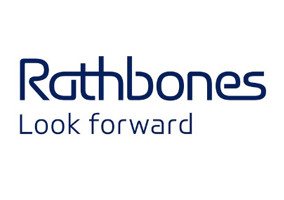When the facts change
At the start of the summer, leading economic indicators were still suggesting that a US or global recession was unlikely in the next six to 12 months. Yet we also said at the time that we couldn’t shy away from the risks and that we were seeing more ‘yellow flags’ in the data. It made sense then for long term investors to stay invested yet defensively positioned given the broadening risks, despite a nascent rally in stock markets. If the facts change, we said, we would change our minds, just as we had done over the previous 12 months.
In the weeks that have followed, the facts have changed. An American recession is now more likely than not. A broad decline in leading indicators steers us to be yet more defensive, but there are both bullish and bearish arguments to be made. While US GDP contracted in Q1 and Q2, it was heavily influenced by unusual trade patterns and slowing inventory accumulation. It seems unlikely that the US entered recession according to the broader, and arguably more relevant, official definition set by the National Bureau of Economic Research. But that’s little comfort when leading indicators of activity suggest that the risk of the US entering an ‘official’ recession before long has increased considerably. It's important to stress that while the chance of a US recession is high – more likely than not at each time horizon from one to six quarters ahead – it is not a foregone conclusion. And if one does arrive, it’s highly likely to be a relatively mild one by past standards. This is important when we come to analyse potential changes to profits and market reaction.
Risks elsewhere
The risk of a deeper recession is much more pronounced in Europe, however, where we’ve been flagging a greater than 50% probability of contraction for some months now. Second-quarter GDP growth was remarkably resilient in the Eurozone, but the price of energy and attendant cost-of-living crisis make that unlikely to continue. The situation in the UK is a little better, but not much. Even after government intervention in energy markets, consumers are still going to face a sharp contraction in their inflation-adjusted wages.
The path of inflation
We’re confident that core inflation will fade rapidly across the globe next year. Demand for consumer goods is falling sharply to more normal levels, and supply chains are becoming unblocked. But inflation pressures in consumer services are broad. Nominal wage growth may need to slow from 5-6% now to 3-4% to give inflation a good chance of getting back to normal next year. This fall in wage growth could take time and the longer inflation remains elevated (as it will in the UK due to energy prices) the greater the risk that wage growth remains high. While a repeat of the 1970s is unlikely, we are concerned that the market may have become too complacent about how quickly inflation could fade during the summer rally.
Central bankers’ agenda
This means that there is a risk that investors were wrong to have revised down expectations for central bank policy rates during 2023, and the snapback after the Federal Reserve’s Jackson Hole conference was something we had anticipated. Particularly given that policymakers have remained emphatic that bringing down inflation is the number one priority, even at the sacrifice of growth. Changes in government bond yields have been very strongly correlated with what central bankers have done relative to market expectations. There is still a risk that bond yields could rise further and this also means that the technology and other so-called ‘growth stocks’ that did well over the summer may struggle to extend their gains much further.
What’s priced into markets?
Equity markets had bounced strongly from their June lows, and though some of this rally has already been given back, the deterioration in the growth outlook may not yet be fully discounted. There has still been no major downgrade to earnings expectations, so the risks to earnings are skewed to the downside. Historically, changes in stock prices lead changes in earnings expectations by circa six months and so it’s possible stock prices have already adjusted. Equity valuation multiples tend to trough in the first month of recession and have even been known to trough before the start of one. There’s considerable evidence that institutional investors have already sold a lot on prior pessimism. Yet retail investors do not appear to have adjusted their positioning by anything like as much yet and it is here that the risk of further capitulation is most acute if a recession begins and inflation stays sticky.
In short, while we recognise these upside risks, earnings downgrades are likely to come, and equity prices probably haven’t fully adjusted. For long term investors like charity endowments, we believe continuing with a substantial bias towards defensive, diversifying assets and inflation-resilient companies still makes sense.
Andy Pitt, Rathbones Head of Charities
Related Articles










